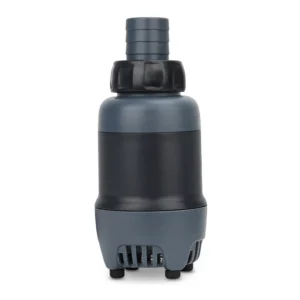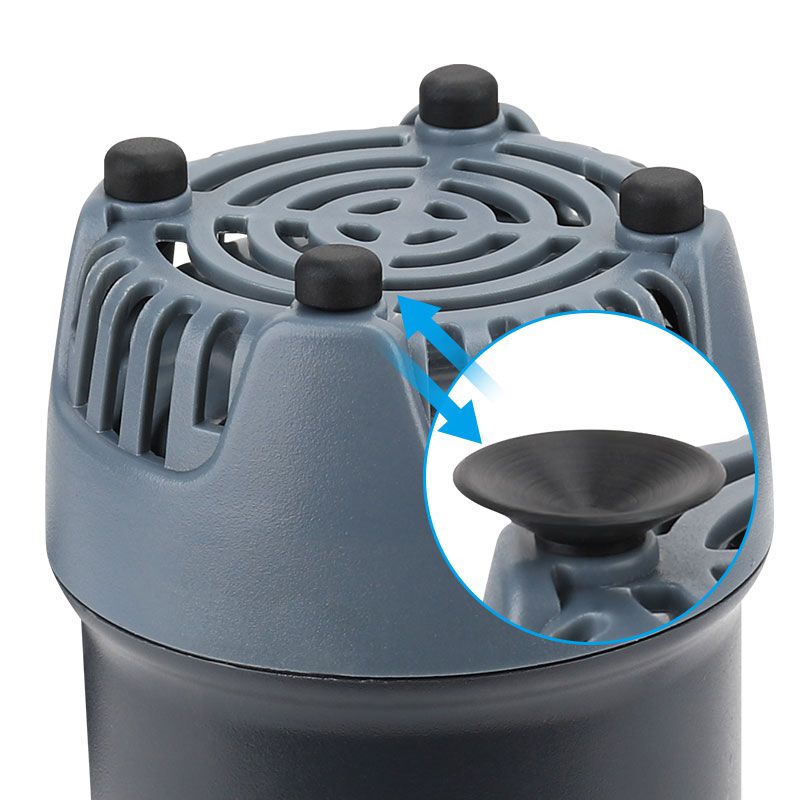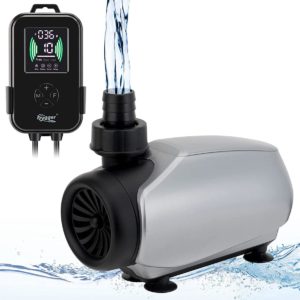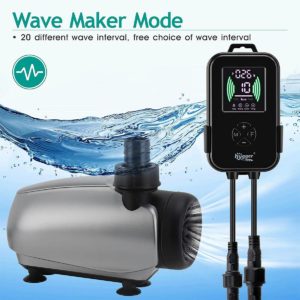What is the Frequency Water Pump for Aquarium
Frequency water pumps are relatively new and more beneficial for aquarists. What is the frequency water pump, working principle, and mechanism are part of this article. With a VFD pump, you can control large and small setups and varying bioloads.
There is also an answer if you are confused about water pump selection. With all of this, you’ll also find a worth-knowing topic at the end of the article.
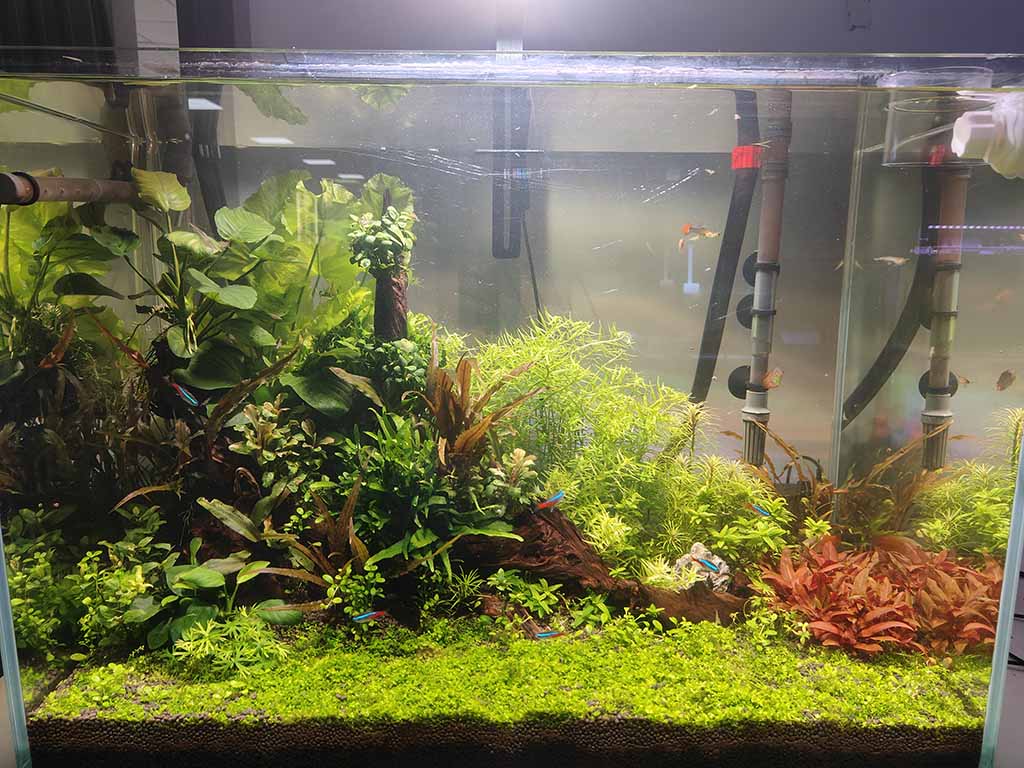
Frequency Water Pump
Frequency water pumps are also known as variable frequency drive (VFD) pumps. It’s a pump that uses VFD technology. With this technology, the user can control the pump’s motor speed and flow rate. In short, you can operate the system at different frequencies according to the fish tank requirement.
These pumps stand out in multiple aspects. Like:
| Control over the flow rate | Energy efficient |
| Optimized oxygenation in the tank | Create customized water patterns |
| It can power additional components, i.e., filtration system, protein skimmers, etc. | Flexible with different types of tanks, i.e., freshwater, saltwater, coral reef tanks, etc. |
Types of Frequency Water Pumps
Here are some types of frequency water pumps.
3-in-1 Pumps
| Space-saving | Suitable for small tanks |
| Do water circulation, filtration, and aeration at once. | They might be inferior in performance compared to solo. |
This 3-in-1 combination waterpump is inferior in performance compared to the dedicated device, i.e., pump, filter, and air pump.
Side Suction Pumps
| Intake of the water from the side hose | Effective in water circulation and filtration |
| Suitable for specific aquarium setups | Do well where the water source is on a side or above the pump level |
Bottom Suction Pumps
| Intake the water from the bottom | Help to clean the water at the bottom of the tank |
| Suitable for aquariums where the water level is low from the pump | Require frequent cleaning to avoid clogging |
How Frequency Water Pump Works in Tanks?
Frequency water pumps operate on several frequencies. You can program it manually or automatically, i.e., sensors.
Working Principle
Manual adjustment or sensor decides about the specific flow requirement. According to the desired value, the motor converts electrical energy to mechanical energy and ultimately to centrifugal energy to achieve the desired water flow in the tank.
Procedure
Here is how a VFD pump works in an aquarium.
Flow Rate Adjustability
Frequency pumps allow you to set the desired frequency. You can do it manually or with the help of some sensors or controllers. With this, you can create different flow rates, adjustments relative to some extra implements, and wave patterns.
Electrical Motor
The electrical motor is the heart of the VFD system. It converts the input electrical energy into mechanical energy.
Intake and Outlet Duct
There are two ducts on the impeller, i.e., intake and outlet. The intake duct sucks the water and imparts the kinetic energy on the water with the impeller. After creating the desired flow rate, the water moves out from the outlet duct.
Impellers
The motor rotates the impeller, i.e., a rotating component. The impeller converts the mechanical energy into centrifugal or rotational motion.
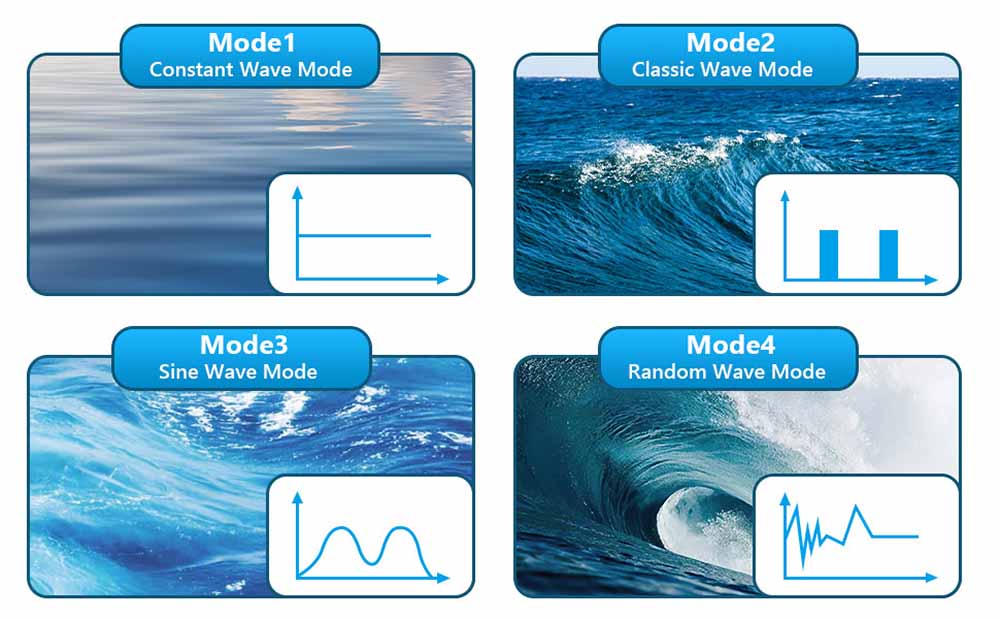
Common Water Pump vs Frequency Water Pump
Both frequency water pumps and common water pumps have their pros and cons. In the following section, you’ll learn about the comparison of waterpump. This comparison will help you to decide on a selection.
Comparison
| Feature | Single Frequency Pumps | Single Frequency Pumps |
| Speed | Fixed Speed | Variable speed |
| Efficiency | Low efficiency | High efficiency |
| Control over the flow rate | Low control | Complete control |
| Versatility | Suitable for limited system | Suitable for versatile systems |
| Initial cost | Lower | Higher |
| Operation cost | Higher due to constant speed | Lower due to variations in speed |
| Maintenance | Easy to maintain because requires off-and-on maintenance | Hard to maintain because often requires inspection to maintain efficiency |
| Installation | Easy to install | Hard to install |
| Cost | $20 to $200 | $60 to $500 |
Types of Single Frequency or Common Pumps
Single-frequency pumps are divided into three categories.
- Centrifugal pumps (Most Common)
- Submersible pumps
- Return pumps (Suitable for large tanks)
Pros and Cons of Single Frequency Pumps
| Pros | Cons |
| Simplicity | Limited control-overflow rate |
| Cost-effective | Energy inefficient |
| Suitable for simple systems | Hard to provide optimal conditions in varying situations |
| Reliable | |
| Easy to maintain |
Pros and Cons of VFD Pumps
| Pros | Cons |
| Energy efficient | Need to be programmed |
| Suitable for variating condition | High initial and maintenance cost |
| Quieter | |
| Precise flow rate adjustment | |
| Reliable outputs |
How Long Should You Run a Frequency Water Pump in a Fish Tank?
There is no single answer for how long you should run a VFD pump in aquariums. However, optimal working hours per day are 8 to 12. It depends on variable factors. Some of those are as follows.
Biological Load
It depends on the biological load in the tank, i.e., aqua pets and live plants. Different species demand different oxygen levels and optimal growth conditions. According to the demand of bioload, working varies.
Tank Size
Tank size is another directly related parameter to the working hours of the VFD pump. Larger tanks require extra water circulation because there is a higher chance of dead spots. To overcome this, you need to run them for long hours.
Water Parameters
Water parameters also have a direct relation to it. If the temperature is high, it means a lesser oxygen level in the tank. That needs more operating hours. Moreover, pH, nitrite, nitrate, and ammonia levels directly affect how long a VFD pump should run.
Filtration Condition
Keep an eye on the filtration system of the tank. If your filtration system is working correctly, then run it for fewer hours.
Proper Maintenance
Make a maintenance schedule, i.e., daily, bi-weekly, weekly, monthly, etc. It will reduce its working hours.

Conclusion
Frequency water pumps change the flow rate according to the programmed value. Various types of VFD pumps serve different causes. In setup, manual dials or sensors help to set the input and pass the relative current to the motor.
The rest of the procedure is the same as single-frequency pumps. VFD pumps and single-frequency pumps have their advantages and disadvantages. So, selection depends on your needs. Moreover, the working hours depend on different parameters.

